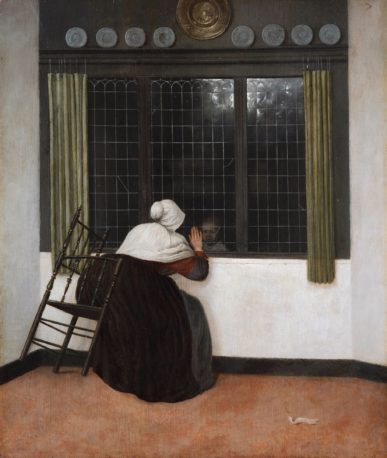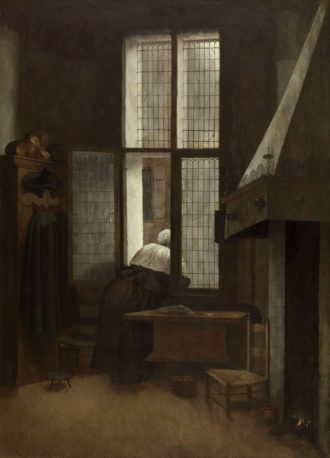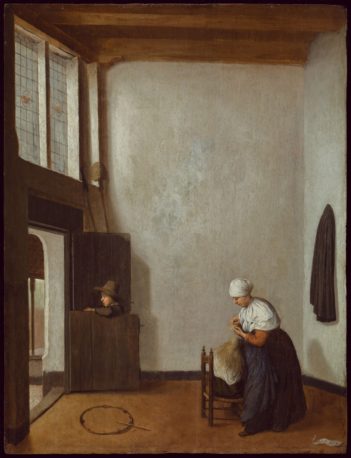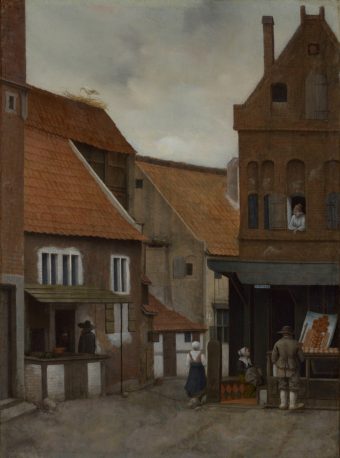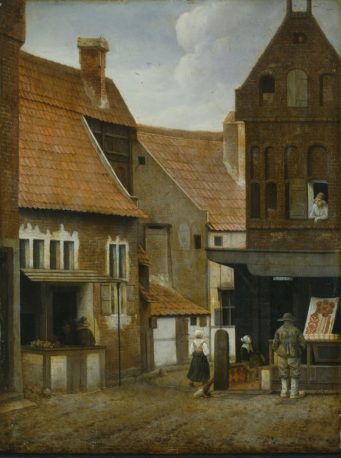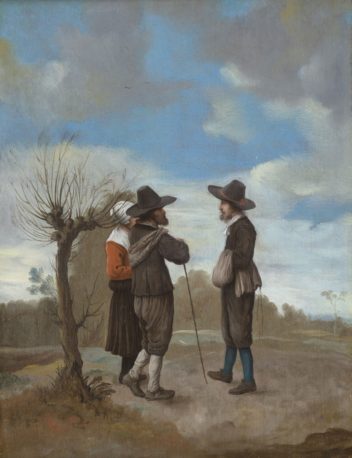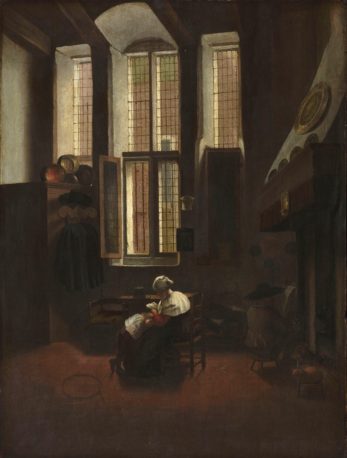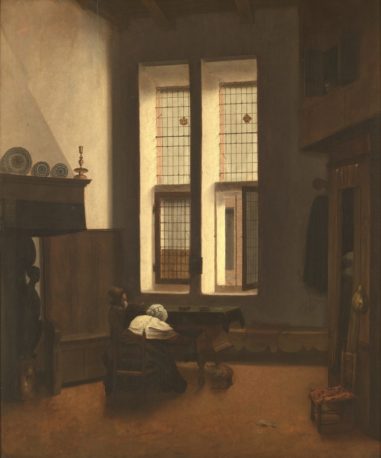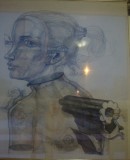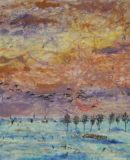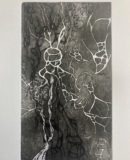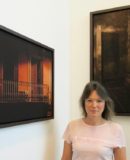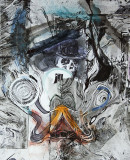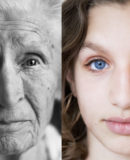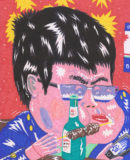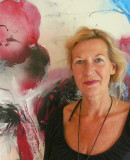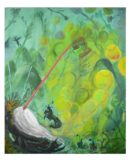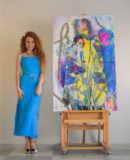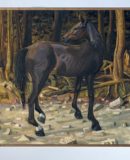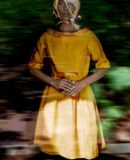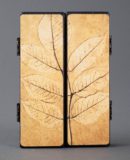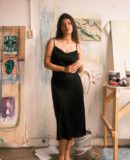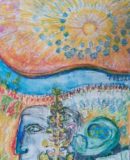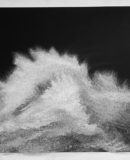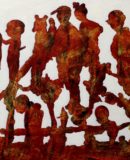World Fine Art Professionals and their Key-Pieces, 406 - Jacobus Vrel, predecessor of Vermeer
World Fine Art Professionals and their Key-Pieces, 406 – Jacobus Vrel, predecessor of Vermeer
With all the attention paid to the painter Vermeer this year, his surroundings also come into the picture more clearly. The Prinsenhof Delft has devoted a special exhibition to it. Inspirators and predecessors are also discovered. An important person appears to be the painter Jacobus Vrel, who previously also painted women in rooms with diamond windows and Dutch houses and streets. The Mauritshuis is dedicating an exhibition to this unknown painter.
Almost nothing is known about the painter Vrel. We don’t know what he looked like, as is also the case with Johannes Vermeer. We do know that he made about 50 paintings. Often performances that take place on the street, or indoors. ‘Woman leaning out of a window’ from Vienna, together with two other paintings by Vrel, was part of the collection of Archduke Leopold Wilhelm of Austria (1614-1662).
Signature
An inventory from 1659 is the only contemporary source on the painter. Examination of the panels shows that Vrel had been active as a painter for many years before 1654. And therefore earlier than the Delft masters Vermeer and Pieter de Hooch. For a long time, paintings by Vrel were even registered to Johannes Vermeer. They painted the same subjects and shared the same initials: JV. Signatures of Jacobus Vrel, where his name was written in full, were even forged into Vermeer signatures. Two works from the exhibition were once bought as ‘a Vermeer’ in 1888, ‘Street with a bakery near a city wall’, presumably the Waterstraat in Zwolle from the Hamburger Kunsthalle and ‘Interior with an old woman reading’, with a boy behind the window, from a private collection.
Letters on the floor
Vrel signed his paintings in a special way. In various paintings you see a white note lying on the floor. These letters bore Vrel’s signature. Research has shown that multiple variations of his signature were used. For example, ‘J V’ returns, but also ‘J Vrel’, ‘Jacobus Vreelle’ or ‘Jaco / büs / frell’, where the German spelling of the first name may refer to a stay in the border region with Germany.
One woman with window
In many of his paintings, Vrel shows one woman standing by a window in a room with a high ceiling, or sitting by a fireplace. Typical is the clothing the woman wears; a dark skirt with a white shawl.
The face is often not visible to the spectators. With these typical elements Vrel created his own world. The sometimes somewhat flawed representation of the perspective gives the performances a somewhat naive charm. For example, in the work ‘Woman at window, looking at child’ (image 1) I wondered how that woman could maneuver in that chair with her large buttocks. She must have had the entire left armrest of the pretty chair cut off for her communication with the outside world.
Details
This involuntarily makes you pay even more attention to the details: the broken panes in the windows in his interior depictions, or a piece of white paper in the corner of the room, bearing the painter’s signature. The artist himself made several copies of his own paintings. This phenomenon of copying also occurs in other 17th-century Dutch (portrait) painters.
We don’t know why Vrel did this. But it’s an easy way to increase production. See paintings 6 and 7, they are almost identical, except that the first work (1646) shows a stork’s nest and the other (1653) shows a chimney. ‘The chimney must also be smoking’, ‘money has to come in’, Vrel must have thought.
International research
To find out more, an international research project took place in which three museums joined forces: the Alte Pinakothek, Bayerische Staatsgemäldesammlungen in Munich, the Fondation Custodia, the Frits Lugt Collection in Paris and the Mauritshuis. The three museums commissioned ‘dendrochronological research’ (examination of growth rings to date a wooden panel) of various paintings. This showed that these are older than previously thought. The street scenes were probably created around 1635-1640, the earliest interiors a few years later. Although we do not know the painter’s birth and death dates, we estimate his life period to be between 1615 and 1670.
East of the country
In order to place Vrel in a specific area in the Netherlands, research has been done into the topography of the streets in his paintings. Researchers Dirk Jan de Vries and Boudewijn Bakker studied the streets and facades. They assume that some streets can be placed in the east of the country, especially in Zwolle. With the aid of infrared and X-ray fluorescence, ‘pentimenti’ (changes by the artist himself) were discovered. Figures were modified or completely painted away, such as a child in a street scene by Vrel from the Rijksmuseum. In this way Vrel managed to perfect his compositions. All research results can be found in the English-language monograph on Vrel, published by the Mauritshuis in collaboration with the partners mentioned.
Images
1) Jacobus Vrel, Woman at a Window, Looking at a Child, after 1656, Panel, 48 x 39 cm, Paris, Fondation Custodia, Collection Frits Lugt, 2) Jacobus Vrel, Woman Leaning from a Window, 1654, Panel, 67 x 47 cm, Vienna, Kunsthistorisches Museum, Gemäldegalerie, 3) Jacobus Vrel, Interior with a Woman Combing a Girl’s Hair, and a Boy at a Door, after 1649, Panel, 56 x 41 cm, Detroit, Michigan, Detroit Institute of Arts, Gift of M. Knoedler & Co., 1928, 4) Jacobus Vrel, Woman by a Fireplace, Panel, 36 x 28 cm, Amsterdam, Rijksmuseum, acquired with support from the Photo Sales Commission, 1931, 5) Jacobus Vrel, Little street with a woman on a bench, after 1650, Panel, 36 x 28 cm, Amsterdam, Rijksmuseum, 6) Jacobus Vrel, Little street with a bakery near a city wall, presumably the Waterstraat in Zwolle, after 1646, Panel, 53 x 39 cm, Private collection, 7) Jacobus Vrel, Street with a bakery near a city wall, presumably the Waterstraat in Zwolle, after 1653, Panel, 50 x 39 cm, Hamburg, Hamburger Kunsthalle, 8) Jacobus Vrel, Landscape with Two Men and a Woman in Conversation, before 1656, Panel, 37 x 28 cm, Vienna, Kunsthistorisches Museum, Gemäldegalerie, 9) Jacobus Vrel, Woman Reading to a Boy , with a man by the fire, Panel, 63 x 47 cm, Lille, Palais des Beaux-Arts, bequest Alexandre Leleux, 1873, 10) Jacobus Vrel, Woman and boy in an interior, with a child in an alcove, after 1660, Panel, 72 x 60 cm, Brussels, Royal Museums of Fine Arts of Belgium.
https://www.mauritshuis.nl/ https://www.mauritshuis.nl/nu-te-doen/tentoonstellingen/jacobusvrel/https://ifthenisnow.eu/nl/personen/jacobus-vrel-voorloper-van-vermeer
Disclaimer: The views, opinions and positions expressed within this guest article are those of the author Walter van Teeffelen alone and do not represent those of the Marbella Marbella website. The accuracy, completeness and validity of any statements made within this article are not guaranteed. We accept no liability for any errors, omissions or representations. The copyright of this content belongs to Walter van Teeffelen and any liability with regards to infringement of intellectual property rights remains with the author.

